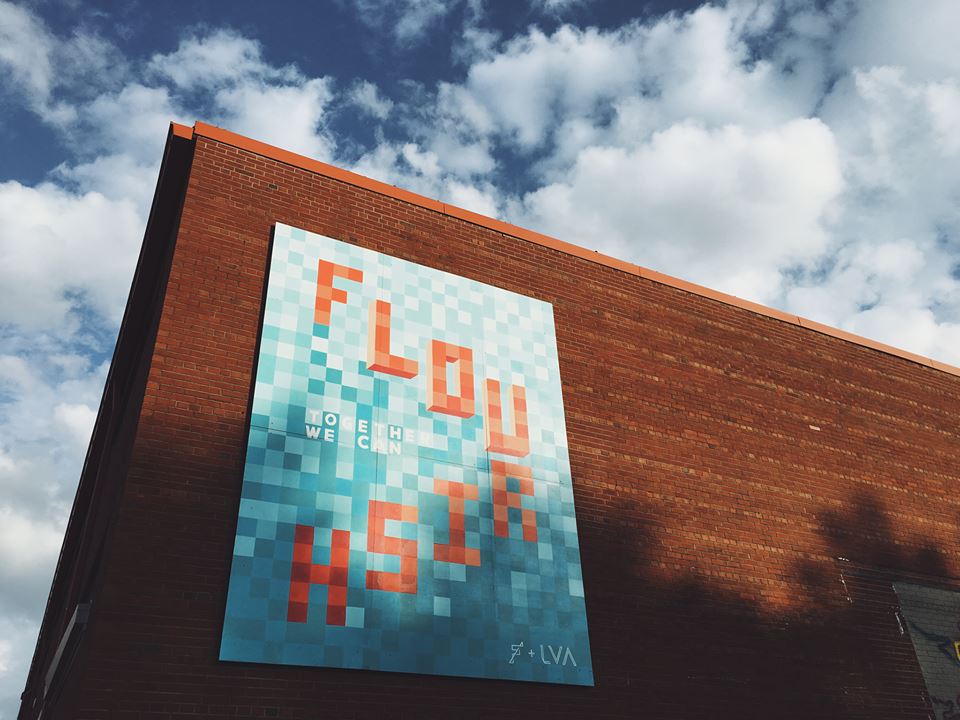For many, many years, the Bright Foundry was the primary metal arts foundry in Louisville. Even after founder Barney Bright’s death in 1997, the facility functioned under the stewardship of Barney’s son, Jep Bright until April 2016.
Artists: Matt Weir, Tamina Karem, and Scott Boyer
Matt Weir, Tamina Karem, & Scott Boyer all worked at Bright Foundry, and knowing Jep was thinking of shutting down, had talked to him about purchasing the equipment and opening a new Bronze metal casting foundry on property they intended to lease on Portland Avenue, just across the street from The Table restaurant. They followed through and have now moved the contents of Bright Foundry into that location at 1715 Portland Avenue. They are still sorting things out, but are already working on projects and some small casting contracts.
Barney Bright’s River Horse statue at 6th & Chestnut was, of course, cast at Bright, as was Ed Hamilton’s York statue on the Belvedere, Bob Lockhart’s Robert Bellarmine statue on the campus of Bellarmine University, and many other local sculptures. Over the years there seemed to be plenty of work, so the Falls Art Foundry team are confident about the opportunity for work once they are fully established. But the journey to that result will require a lot of work - and money.
Building plans by Mose Putney Architect
The building, with over 55,000 square feet of space, high ceilings, and land allowing for expansion, is ideally suited to the task, but it will require modifications that will run in the neighborhood of $350,000 before the three will have met all of their goals.
Currently, the location satisfies much of the needs for the functioning foundry, with some changes needed in the floor to accommodate furnaces, extension of some interior walls to the high ceilings, and a second double wide door, but the team also has ambitions to develop what Boyer describes as, “our ideal foundry,” (the new building is about 19,000 square feet larger than Bright Foundry). Plans include building an annex to house retail and educational spaces that would enable outreach to the community. “Our long-term vision is for a sculpting campus,” explains Karem.
Artist, Tamina Karem with one of her recent pieces
Between them, the trio can boast 40 plus years of experience working at Bright Foundry, and offer what Weir describes as, “a diversity of experience in materials and practices,” positioning them to be a full-service operation for artists in the area. “All foundries are collaborative efforts run by artists or, at least, craftspeople,” states Boyer, as he explains that the artists working to caste a bronze piece have a significant impact on the final result, often as much as 1/3 of the surface might change during the process. The observation underscores the importance of the relationship sculptors develop with a specific foundry. Bright Foundry enjoyed a strong reputation with artists, a reputation that Boyer, Karem, and Weir helped build and hope to carry over to Falls Art Foundry.
Artist, Matt Weir at work in Falls Art Foundry
The technique of lost-wax casting is complicated. Weir breaks it down to nine stages, each of which contains several steps. Although all three have university educations, they learned the technique working at Bright. Because there is no academic foundry in Louisville right now, the opportunity to demonstrate the technique is important. It is older than one might assume, with the oldest known examples being the objects discovered in the “Cave of the Treasure “(Nahal Mishmar) hoard in southern Israel, and which belong to the Chalcolithic period (4500–3500 BC). Conservative estimates of age from carbon-14 dating date the items to c. 3700 BC, making them more than 5700 years old.
The Falls Art Foundry team currently rent the building with an option to purchase, and they seem nothing if not committed, so the smart money is on them following through and realizing their dream.
On June 2, it was announced that Louisville Visual Art would bestow the 2017 Barney Bright award of $1200 to Falls Art Foundry.
(Editor’s note: an interview on LVA’s PUBLIC, broadcast on WXOX-97.1 FM on 12.16.16, was used as a source for this article.)
This Feature article was written by Keith Waits.
In addition to his work at the LVA, Keith is also the Managing Editor of a website, www.Arts-Louisville.com, which covers local visual arts, theatre, and music in Louisville.
Entire contents copyright © 2017 Louisville Visual Art. All rights reserved.
Are you interested in being on Artebella? Click here to learn more.























